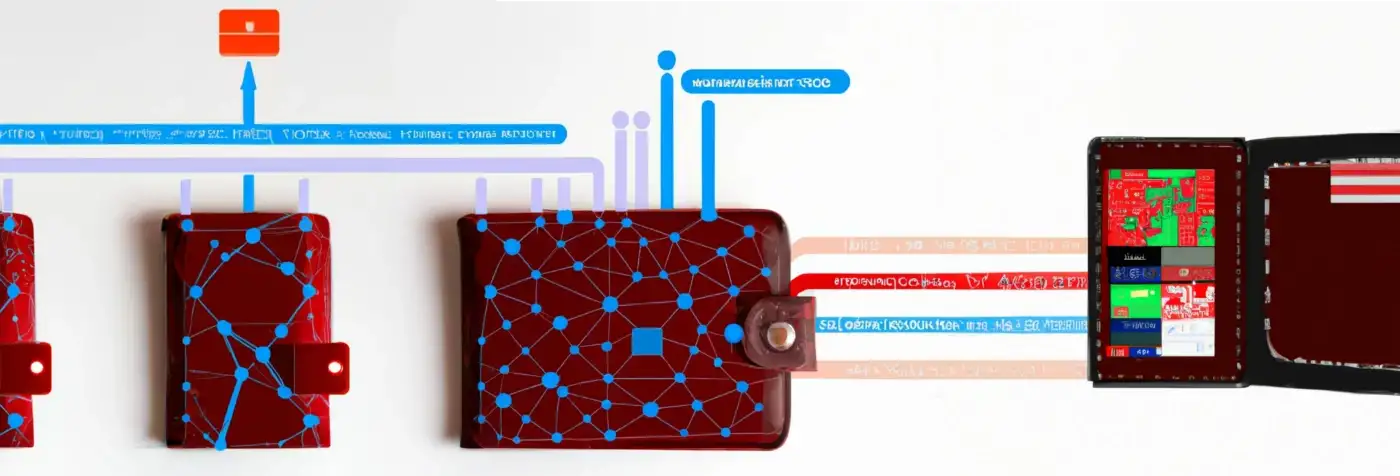Technological innovation in blockchain has flourished over the last few years — STARKs, SNARKs, EIP-1559, the Ethereum Merge — are all huge technological achievements. However, UX and UI design have failed to keep up. People still get stuck on 16-word seed-phrases, and getting into DeFi without a centralised intermediary is still too intimidating for many . To onboard the next billion users into Web3, improving the user onboarding experience is critical.
As FTX demonstrated (and Gemini, Celsius and Mt. Gox), retaining self-custody over one’s assets is critically important. However, until recently, self-custodial wallets have been clunky and confusing for the average user. Most people forget their Web2 passwords on a monthly basis; how are users expected to keep their seed phrase and private keys safe for eternity?
Simply put, it’s a security nightmare. As we’ve seen countless times, one wrong move, whether initiated by bad actors or negligence, can result in the loss of millions of dollars.
As the first contact point for new crypto users, Ethereum wallets must be easy to use, secure, and customizable to fit each user’s needs. This requires developers to integrate the simplicity of Web2 financial products with the features of Web3.
This is exactly what account abstraction achieves.
Account abstraction improves the safety and security of self-custodial wallet products by removing the users’ reliance on the private key and making wallets more programmable. With this improved UX, non-custodial wallets can finally scale to millions of mainstream crypto-users.
But to fully understand the impact of account abstraction, we must refresh ourselves on how Ethereum accounts work.
The Basics of Ethereum Accounts
There are two types of Ethereum accounts:
- Externally Owned Accounts (EOA)
- Contract Accounts (CA)
Let’s break each down a bit further.
Externally Owned Accounts
Externally owned accounts, like MetaMask and Coinbase Wallet, are the typical account type for Ethereum users. Each EOA consists of a private and public key, called a keypair.
All transactions are authorized and signed by private keys. Once a transaction is signed, the EVM verifies that the signature is valid using the EOA’s account address. The hard-coded logic in the EVM signifies that the account (the object holding your tokens) and the private key (signer) are coupled as one.
Losing your private key means losing your funds, or even control of your account, forever.
Contract Accounts
Meanwhile, contract accounts, synonymous with account abstraction, are smart contracts deployed on the Ethereum blockchain. These contracts are controlled by code logic and do not require private keys. Unlike EOAs, contract accounts can not initiate transactions. Instead, their transactions are triggered by instructions from EOAs.
Why Account Abstraction Matters
Account abstraction entails abstracting the hard-coded authorization logic away from EOAs, turning each account into a programmable smart contract that can be tailored to meet the needs of any individual.
As explained by Argent co-founder and Chief Science Officer Julien Niset in a recent Stark @ Home event, this flexible authorization logic gives freedom to developers to play around with account features such as…
Hardware Signers: Using an iPhone or Android’s secure enclave to turn any smartphone into a hardware wallet. From there, users can verify transactions using biometric data like a fingerprint or Apple Face ID. We’ve already begun to see self-custodial wallets like Braavos roll out this feature.
Paymasters: Allow users to pay gas fees in any token, or even have a third-party-designed mechanism pay for transactions.
Social Recovery: In the event a private key is lost or compromised, users can authorize a new key as a legitimate wallet owner. This can include a variety of recovery methods through trusted contacts, hardware wallets, or third-party services. The idea is to make recovering access to your account as easy as recovering your bank account password through an email.
Multifactor Authentication: Similar to the commonplace Web2 2FA practices, users can set up two (or more) authentication methods for their crypto wallets, where a transaction is only signed once a user confirms the approval via a second option like email or SMS. Users can also set up daily transfer limits or lists of account addresses of which the wallet is automatically blocked from interacting.
Quantum Resistant and Gas-Efficient Signatures: Ethereum’s current signature scheme, ECDSA, is computationally extensive (read: higher gas fees) and can be broken by quantum computers. Through signature abstraction, different account contracts use more efficient and quantum-secure signature schemes. Starknet uses its own proprietary STARK-friendly curve.
Not only do these features provide users with greater security and more flexibility, but more importantly, result in a much better user experience.
Listed by Vitalik Buterin as a “long-time dream” for the Ethereum developer community, innovations around account abstraction, mainly EIP-2938 and EIP-3074, have swirled since 2020. However, both required tradeoffs around security and implementation. EIP-4337, the most promising development thus far, proposes a version of account abstraction without requiring changes to the Ethereum protocol.
Account Abstraction and Starknet
Unlike Bitcoin and Ethereum which are retrofitting their current protocols to support account abstraction, Starknet has implemented account abstraction since day one. When coupled with the scalability and capabilities of our STARK proofs, the potential for wallet innovation is limitless. This is why the next generation of self-custodial wallets, like Argent and Braavos, are currently being built on top of our network.
Starknet’s approach is similar to EIP-4337, acknowledging that complete account abstraction would still result in confusing UX and could open the door to attacks on sequencers. Rather, it aims to achieve both signature abstraction and payment abstraction by mutualizing some of the required on and off-chain infrastructure.
And while there’s still much more work to do, account abstraction is gaining traction beyond a small circle of crypto natives. In December, Visa proposed the idea of using account abstraction to set up automatic recurring payments on Starknet. Using a delegatable account, users can grant permission to initiate a payment to a pre-approved smart contract. From there, the smart contract will be programmed to deduct a set payment amount on a specific day, over a set duration of time. While Visa hasn’t yet revealed its plans for its own services, the interest alone speaks volumes, and may foreshadow a world where big-tech subscription platforms like Netflix and Spotify could embrace crypto-adoption.
As for what the future holds, only time will tell. But one thing is certain. By making wallets easier and safe to use, account abstraction will serve as a powerful catalyst for self-custodial blockchain wallets to scale to millions of mainstream crypto-users. We’ll keep on building in the meantime.



